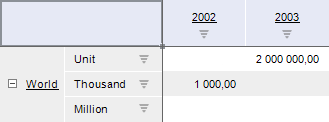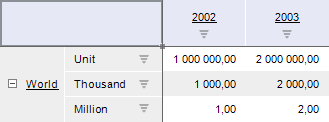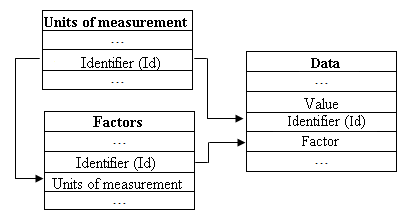
User-defined units are used to describe all indicator data when working with cubes. If it is intended to work with indicators described using different measurement units, it is available to set up automatic scaling of indicator values.
Recalculation of units converts the value written in one unit in the source to all other available units.
Units dictionary is added as a separate dimension.
Example of cube before enabling of measurement unit scaling (units dictionary is placed into rows):

Example of cube after enabling measurement unit scaling:

Source data is written only in the basic unit, but it is displayed for each unit respective to the scale of this unit.
Non-numeric values are duplicated for each element of units dictionary.
To correctly scale measurement units, a cube must contain two dictionaries with a certain structure:
The created dictionaries must be added to the list of cube dimensions on the Cube Dimensions page and must be selected in the Units and Indicators page. Dictionaries may be standard and MDM dictionaries.
Data source should include two additional fields to establish connection with these dictionaries.
This relationship looks as follows:

NOTE. To provide correct work of scaling mechanism, the indicators dictionary and in the source identifiers of unit must match.
See also: